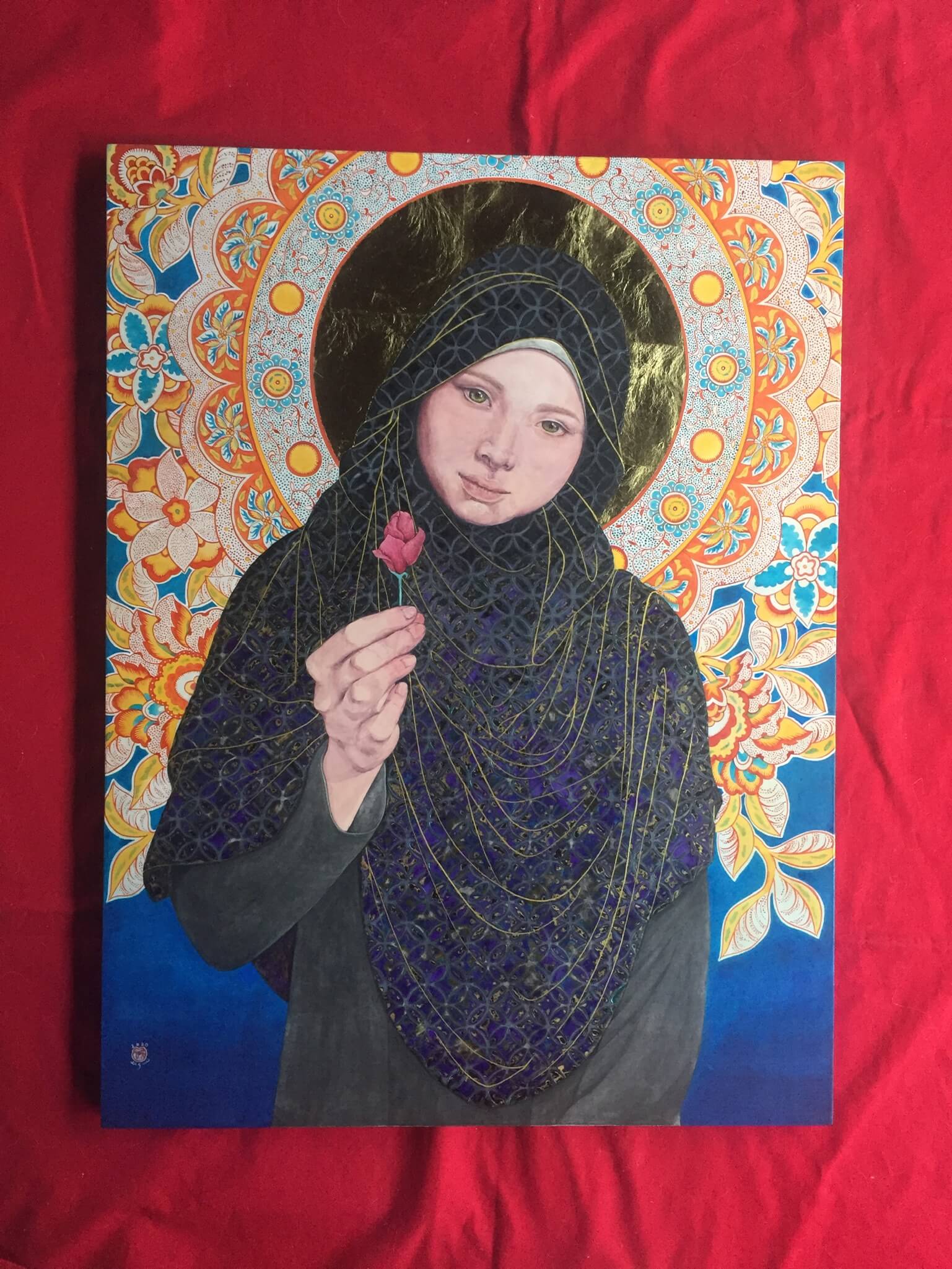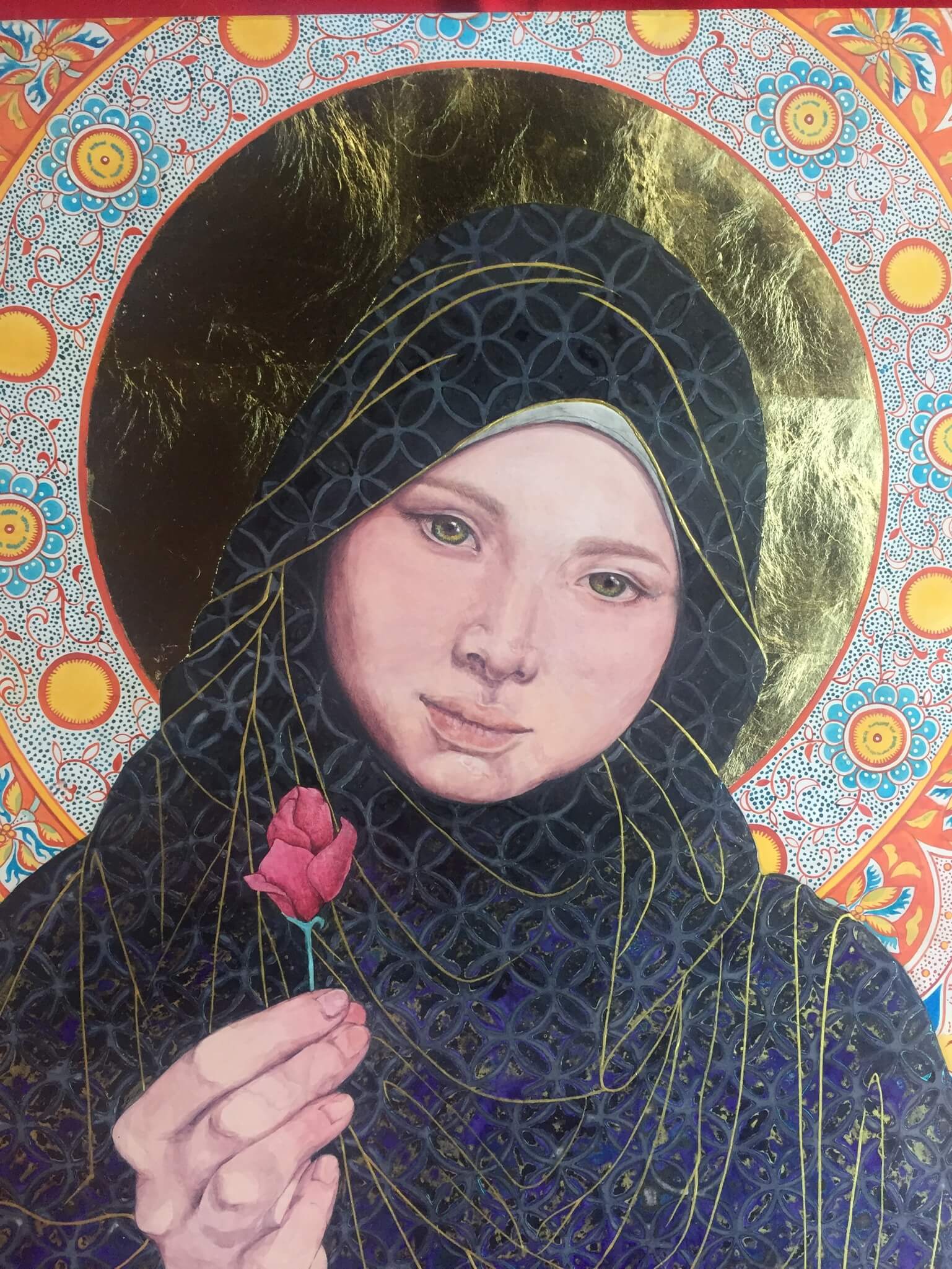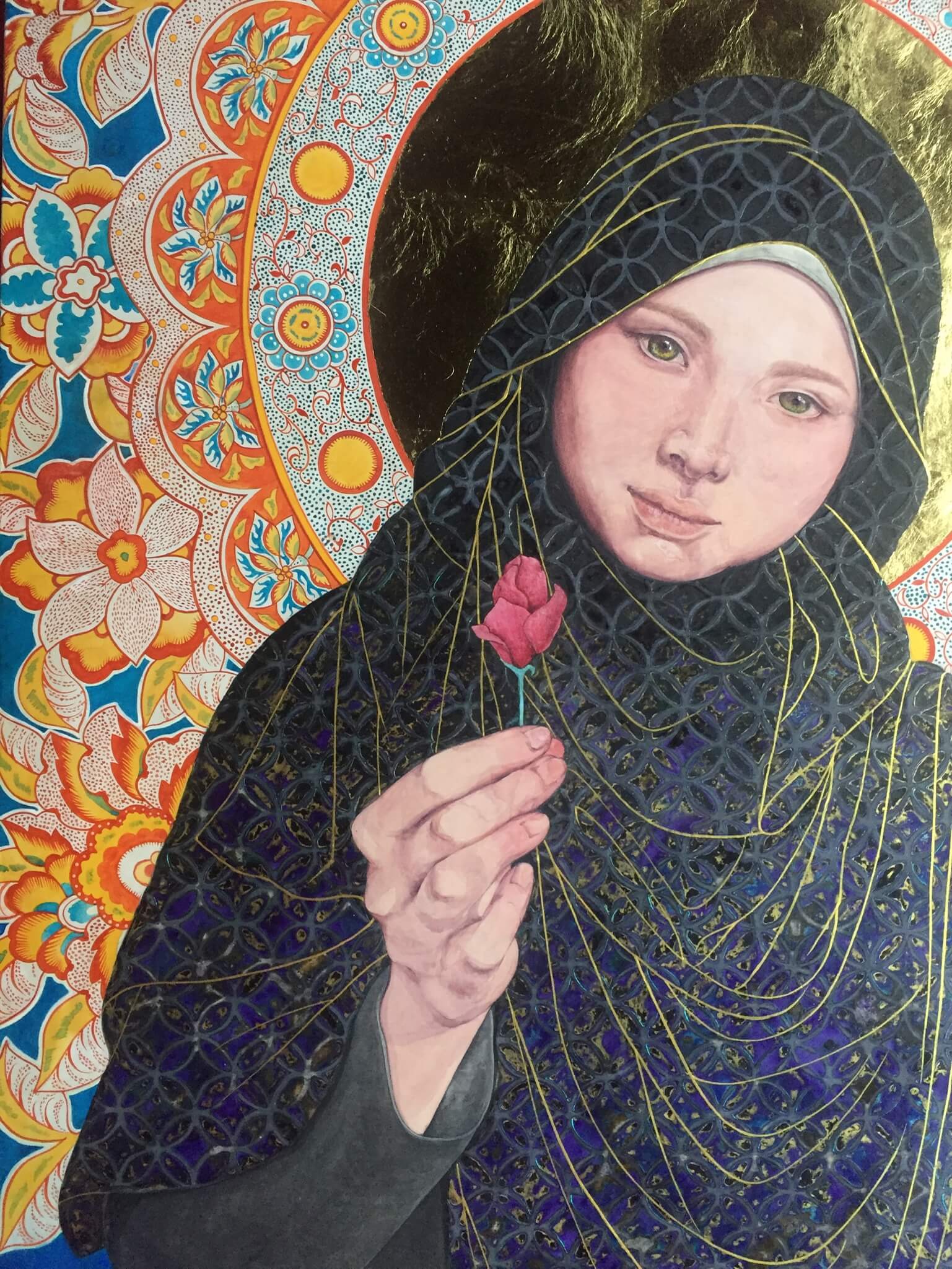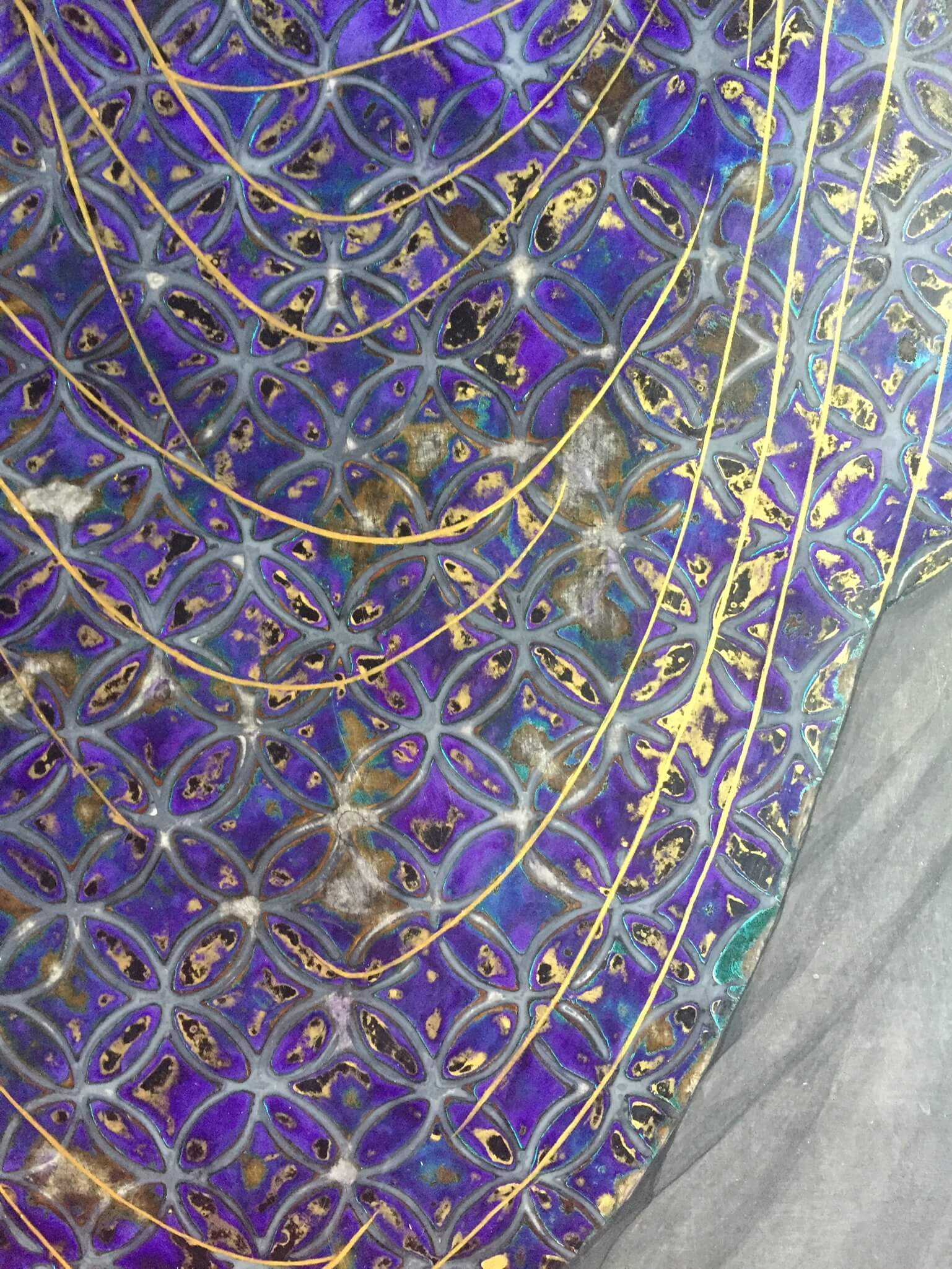Painting
Circle~love~
Story
While examining murals in a mosque, which serves as a place of worship in Islam, I began to notice similarities to the patterns I always depict. Through further investigation, I realized that indeed a common form was being used.
The criteria for perceiving beauty might be instinctual, transcending eras, countries, and cultures.
Moreover, these patterns dispersed worldwide through the Silk Road. Each region's flora contributed to the creation of new designs, eventually integrating into various local traditions such as temple decorations and color techniques.
The patterns depicted in the halo of this artwork originated from Sakai sarasa, a pattern widely produced in Japan during the late Edo period.
I had the opportunity to portray a woman wearing a hijab for the first time, specifically for an exhibition in Dubai. In the process, I took the chance to study Islam, which was largely unfamiliar to me.
I discovered that the hijab holds great significance for Muslim women, serving as both a crucial garment and an expression of individual will. I found it fascinating that hijabs vary significantly based on country, region, and sect. Contrary to my initial belief that it must be entirely black, hijabs come in a range of colors, from vibrant hues to elegant blacks, and sometimes even as part of high-end fashion brands' new collections.
In this piece, I adorned the hijab with the "shippo mon" (七宝紋), a pattern traditionally considered auspicious in Japan. The shippo mon, associated with seven treasures mentioned in Buddhist scriptures, includes gold, silver, lapis lazuli, crystal, conch shell, coral, and agate.
This pattern, with its eternal chain of interconnected circles, symbolizes harmony, completeness, and good fortune. It suggests that human connections and relationships are as valuable as the seven treasures.
"Goen" (ご縁), a term frequently used among Japanese, implies both positive and negative connections. I believe it represents a visible manifestation of cause and effect.
Furthermore, I consider this connection to extend across all living beings and even influence the invisible, vast networks within natural and cosmic environments.
In Islam, the white rose symbolizes the founder, Muhammad, and the red rose symbolizes the absolute God, Allah. I chose to depict the woman holding a red rose, with the subtitle "Love," representing the symbolic meaning of the red rose.
The criteria for perceiving beauty might be instinctual, transcending eras, countries, and cultures.
Moreover, these patterns dispersed worldwide through the Silk Road. Each region's flora contributed to the creation of new designs, eventually integrating into various local traditions such as temple decorations and color techniques.
The patterns depicted in the halo of this artwork originated from Sakai sarasa, a pattern widely produced in Japan during the late Edo period.
I had the opportunity to portray a woman wearing a hijab for the first time, specifically for an exhibition in Dubai. In the process, I took the chance to study Islam, which was largely unfamiliar to me.
I discovered that the hijab holds great significance for Muslim women, serving as both a crucial garment and an expression of individual will. I found it fascinating that hijabs vary significantly based on country, region, and sect. Contrary to my initial belief that it must be entirely black, hijabs come in a range of colors, from vibrant hues to elegant blacks, and sometimes even as part of high-end fashion brands' new collections.
In this piece, I adorned the hijab with the "shippo mon" (七宝紋), a pattern traditionally considered auspicious in Japan. The shippo mon, associated with seven treasures mentioned in Buddhist scriptures, includes gold, silver, lapis lazuli, crystal, conch shell, coral, and agate.
This pattern, with its eternal chain of interconnected circles, symbolizes harmony, completeness, and good fortune. It suggests that human connections and relationships are as valuable as the seven treasures.
"Goen" (ご縁), a term frequently used among Japanese, implies both positive and negative connections. I believe it represents a visible manifestation of cause and effect.
Furthermore, I consider this connection to extend across all living beings and even influence the invisible, vast networks within natural and cosmic environments.
In Islam, the white rose symbolizes the founder, Muhammad, and the red rose symbolizes the absolute God, Allah. I chose to depict the woman holding a red rose, with the subtitle "Love," representing the symbolic meaning of the red rose.
Summary
『Circle~love~』
Media: Wood panel, soil, Kōsai (Japanese tube paint), mineral pigments, acrylic emulsion, gold leaf, alumimum foil
Size: P25
Please contact us by Email.
Please feel free to contact us for more information about our activities and works.












